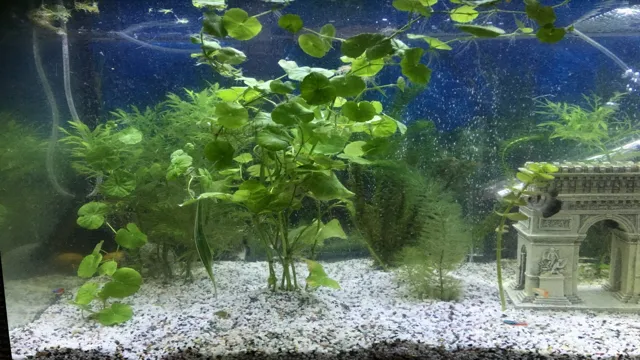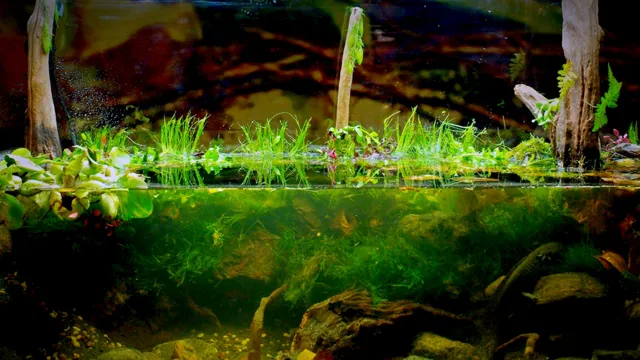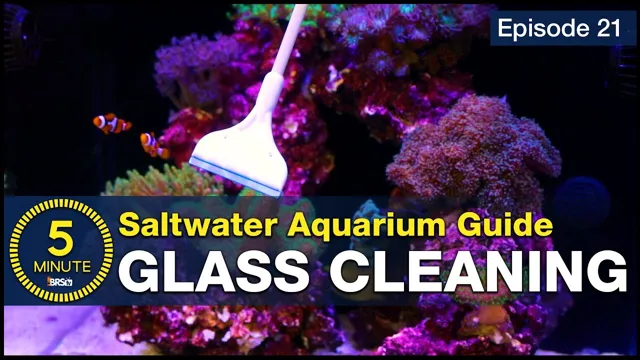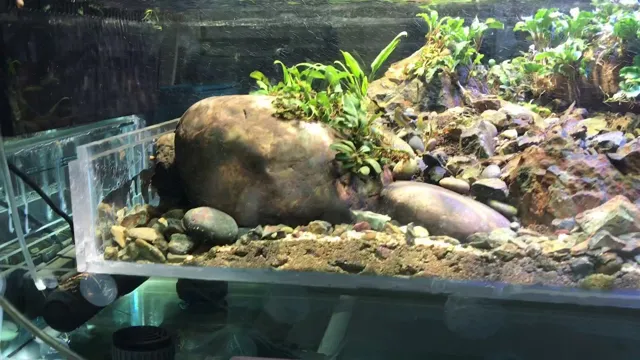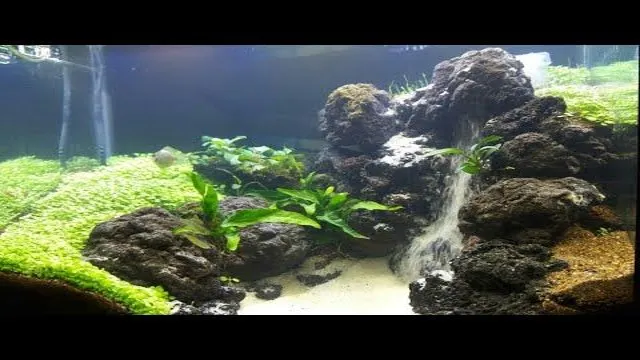If you’re a freshwater aquarium owner, you’ve probably heard of the term “carbonate hardness” or “KH” before. It’s an essential aspect of your tank’s water chemistry that measures the concentration of carbonate and bicarbonate ions in the water. While this parameter is crucial for maintaining a stable pH, the levels can sometimes get too high, causing problems like alkaline water or calcium deposits.
If you’re facing these issues, don’t worry; there’s a solution – Lowering Carbonate Hardness in Freshwater Aquariums. In this blog, we’ll be discussing the different ways you can reduce the KH levels in your aquarium and prevent any harm to your fish and plants. So, let’s dive in!
Understanding Carbonate Hardness
Carbonate hardness (KH) plays an essential role in maintaining a stable environment in your freshwater aquarium. KH measures the concentration of carbonates and bicarbonates in your tank, which determine the water’s buffering capacity to resist pH changes. However, high levels of KH can lead to alkaline water conditions, which are harmful to some fish and plants.
If you want to lower carbonate hardness in your freshwater aquarium, there are a few steps you can take. First, perform partial water changes regularly to dilute the concentration of carbonates and bicarbonates. You can also add peat moss or driftwood to the tank, as these natural materials can release tannins that lower KH levels.
Finally, you can use commercially available products like KH-reducing solutions or reverse osmosis water to lower KH levels more quickly. Remember to monitor your KH levels regularly and make changes gradually to avoid any sudden shifts in pH, which can harm your aquarium inhabitants. By taking care of your KH levels, you can create a healthy and thriving freshwater aquarium for all your aquatic pets.
Explanation of Carbonate Hardness
Carbonate hardness is a measure of the presence of carbonate and bicarbonate ions in water. It is an important parameter to consider when assessing the suitability of water for specific purposes, such as drinking, agriculture, or aquariums. Understanding carbonate hardness can help you prevent problems caused by mineral buildup, like clogged pipes, and it can also impact the growth and health of aquatic organisms.
The term hardness can be misleading, as it is not actually a measure of how hard or soft the water is. Instead, it refers to the concentration of certain minerals in the water, which affect its pH. Carbonate hardness, in particular, maintains a stable pH in water, making it an important factor in the maintenance of aquariums and aquatic life.
So, whether you’re a home aquarium enthusiast or a farmer, understanding carbonate hardness can help you better manage your water quality and ensure optimal performance.

Why is Carbonate Hardness important in Aquariums
Carbonate hardness is an essential aspect to consider in aquariums because it plays a crucial role in maintaining stable water conditions for aquatic life. In simple terms, carbonate hardness (KH) refers to the concentration of carbonate and bicarbonate ions in water. These minerals are essential in buffering the pH level of the aquarium water, thus preventing any sudden changes that can be harmful to fish and other aquarium inhabitants.
By maintaining stable KH levels, the pH of the water remains stable, which is essential for the health, growth, and development of fish and plants. It also helps prevent rapid pH swings that can cause stress, disease, and even death. Therefore, it’s essential to monitor KH levels using a test kit and adjust them accordingly using products designed to increase or decrease KH levels to maintain stable water conditions for your aquarium inhabitants.
Testing Carbonate Hardness
If you’re experiencing issues with high carbonate hardness levels in your freshwater aquarium, testing the water is the first step in solving the problem. Carbonate hardness, which refers to the amount of carbonates and bicarbonates present in the water, can have negative effects on aquatic life if levels are too high. To test for carbonate hardness, a water test kit can be used.
This kit will typically include test strips or liquid reagents that change color in the presence of carbonates and bicarbonates. Once you have a clear understanding of the carbonate hardness levels in your water, there are a few ways to lower them, such as performing regular water changes, using peat moss, adding driftwood or using chemical treatments. Whether you’re an experienced aquarist or a newbie, taking the time to test your water regularly and make the necessary adjustments can create a healthy and thriving aquarium environment.
How to Test for Carbonate Hardness in Aquariums
Testing carbonate hardness in aquariums is an essential aspect of maintaining a healthy aquatic environment for your fish. Carbonate hardness measures the amount of minerals, such as calcium and magnesium, present in the water. It’s important to keep an eye on carbonate hardness levels, as variations can lead to pH imbalances, which can harm the fish. (See Also: How to Get to the Aquarium in Lisbon: A Comprehensive Guide for Tourists)
The most commonly used method for testing carbonate hardness is by using a titration kit. This kit typically comes with a test tube, reagent drops, and a colour chart. After adding the reagent drops to the water sample, you can compare the colour of the water to the provided chart to determine the carbonate hardness level.
This simple test only takes a few minutes and can provide invaluable insights into the health of your aquarium. So next time you’re wondering about the water quality in your fish tank, take a few minutes to test for carbonate hardness and keep your aquatic pets healthy and happy!
Ideal Levels of Carbonate Hardness in Aquariums
Carbonate hardness is an essential factor in maintaining a healthy aquarium. It is often measured to keep track of the amount of dissolved minerals in the water. Testing carbonate hardness is a straightforward process and can easily be done using test kits available at pet stores.
Ideal levels of carbonate hardness vary depending on the type of fish or plants living in the aquarium. Generally, a range of 3-8 dKH is recommended for most species. However, it’s crucial to understand that different species have different needs.
Some may prefer water with a higher hardness level, while others may require softer water. Maintaining the ideal range of carbonate hardness is crucial as it helps maintain optimal pH levels and prevents sudden fluctuations that could harm aquatic life.
How to Lower Carbonate Hardness
If you’re trying to keep a freshwater aquarium, you may be familiar with carbonate hardness (KH), which is the measure of dissolved carbonate and bicarbonate ions in water. High KH can make it difficult to maintain the pH level in your tank, which can have a negative impact on the health of your fish. To lower the carbonate hardness, there are a few things you can do.
First, you can do partial water changes with soft water, which will gradually bring down the KH. Another option is to use a reverse osmosis filter to remove minerals and ions from the water before adding it to your tank. Finally, you can use a buffering product specifically designed for lowering carbonate hardness.
Whatever method you choose, be sure to monitor the KH levels regularly to ensure they don’t drop too low, as this can also be harmful to your fish. With a bit of effort, you can maintain ideal KH levels and keep your aquarium healthy and thriving.
Water Changes
Carbonate hardness (KH) Water changes are an essential part of maintaining aquarium health, but often, there may be issues with the water’s carbonate hardness (KH). A high KH level can lead to an imbalance in the pH level, making it difficult to maintain a stable environment for your fish and other aquatic organisms. So, how can you lower the carbonate hardness in your aquarium? One way is to perform a regular partial water change using reverse osmosis (RO) water.
RO water lacks minerals and ions, allowing it to have virtually no KH value. By gradually changing a portion of your aquarium water with RO water, you can gradually reduce the overall KH level over time, allowing for a more stable and healthy environment for your aquatic inhabitants. Additionally, you can add KH-reducing chemicals or use a natural product such as peat moss to help lower KH levels.
Always monitor your aquarium closely during this process and make adjustments accordingly, so your aquatic pets remain happy and healthy.
Adding RO (Reverse Osmosis) Water
If you’re struggling to lower the carbonate hardness of your aquarium water, adding reverse osmosis (RO) water can be a great solution. RO water has been filtered to remove impurities, including minerals that contribute to carbonate hardness. This can help bring down the overall hardness of your aquarium water and create a more optimal environment for your aquatic pets.
To add RO water to your aquarium, you’ll need a system that can produce it. This can be done through a dedicated RO filtration system, or you can purchase pre-made RO water from your local fish store. Just make sure to gradually introduce it into your tank and monitor the water parameters closely to ensure the levels are stable. (See Also: How to Make Custom Aquarium Lid – Easy DIY Guide for Fishkeepers)
With a little bit of effort and the right tools, you can create a more hospitable environment for your aquatic pets and enjoy a clearer, healthier tank.
Using Chemical Additives to Lower Carbonate Hardness
Carbonate hardness can be a real headache for those who love keeping fish tanks. Thankfully, there are ways to lower it using chemical additives. One such method is to use a product containing citric acid.
Citric acid is a weak organic acid that can dissolve the calcium carbonate formed in hard water. This can be a fantastic option for those who want to lower carbonate hardness without changing the pH value of the water. Another method involves adding hydrochloric acid to the water, which reacts with the calcium carbonate and forms calcium chloride and carbon dioxide.
This leads to a decrease in carbonate hardness and is a great option for those who want to lower both carbonate hardness and pH value. Both of these methods require precision and care, as adding too much can have negative effects on your aquatic friends. But with the right approach, you can make your water softer and more comfortable for your fish.
Preventing Increases in Carbonate Hardness
If you’re looking for ways to lower carbonate hardness in your freshwater aquarium, there are a few options to consider. One is to use reverse osmosis water, which removes the minerals responsible for increasing carbonate hardness. Another is to add natural substances like Indian almond leaves, peat moss, or driftwood that can help soften the water.
It’s important to test the water regularly to make sure you’re getting the desired results without causing any harm to your aquatic pets. It’s also important to note that sudden changes in water chemistry can stress fish, so any adjustments should be made gradually over time. By taking care to monitor and adjust carbonate hardness, you can help maintain a healthy environment for your freshwater pets.
Using Distilled Water
Distilled water is a popular choice for many aquarium owners, especially those who wish to prevent increases in carbonate hardness. Hard water can cause issues in aquariums, such as reduced water quality and pH imbalances, which can be harmful to aquatic life. Distilled water is a pure form of H2O that has had its mineral content removed by a process of boiling and condensation.
This means it has zero hardness and no dissolved minerals, making it ideal for aquariums. However, it’s important to note that using only distilled water can lead to a lack of essential minerals and ions that are necessary for the overall health of your aquatic pets. Therefore, it’s recommended to use distilled water in combination with other types of water, such as filtered or tap water, to maintain a healthy balance of minerals and ions.
Overall, using distilled water in your aquarium can be a great way to ensure the best water quality for your aquatic pets, but it is important to do so in moderation.
Reducing CO2 Buildup in the Aquarium
Carbonate hardness is an essential factor in preventing the buildup of CO2 in your aquarium. When CO2 dissolves in water, it reacts with carbonates, reducing the carbonate hardness. This reduction causes a shift in the pH of the aquarium, which can be detrimental to the health of the aquatic life.
However, by keeping a stable carbonate hardness, the pH of the water can remain within a safe and healthy range. To maintain stable carbonate hardness, regular water changes and the use of alkaline buffers and additives can be beneficial. It’s essential to monitor the carbonate hardness regularly to ensure that it stays at an optimal level.
By preventing reductions in carbonate hardness, you can help to limit the buildup of CO2 in your aquarium, and keep your aquatic life happy and healthy. (See Also: How to Clean a Plastic Aquarium: Tips and Tricks for Sparkling Results)
Conclusion
So, there you have it folks! Lowering carbonate hardness in your freshwater aquarium doesn’t have to be as hard as all the rocks in your tank. With a little bit of science, some elbow grease, and a whole lot of dedication, you can create the perfect environment for your aquatic friends to thrive and flourish. Remember, balance is key, and with a little bit of finesse, you’ll have those carbonate levels singing a different tune in no time.
Happy fish keeping!”
FAQs
What is carbonate hardness in a freshwater aquarium?
Carbonate hardness refers to the amount of dissolved bicarbonate and carbonate ions in the water, which help maintain pH stability in aquariums.
Why is it important to lower carbonate hardness in a freshwater aquarium?
High carbonate hardness can make it difficult to maintain stable pH levels, which can negatively affect the health of fish and other aquatic life.
What are some methods for lowering carbonate hardness in a freshwater aquarium?
Some methods include diluting hard water with softer water, using ion exchange resins or reverse osmosis to remove minerals, and adding acidic substances like peat moss or driftwood.
Is it safe to lower carbonate hardness in a freshwater aquarium?
Lowering carbonate hardness should be done gradually and carefully, as sudden changes can stress aquatic life. It’s important to monitor pH levels and make adjustments accordingly.
How often should carbonate hardness be tested in a freshwater aquarium?
Ideally, carbonate hardness should be tested regularly and adjusted as needed. This can vary depending on factors like the size of the aquarium and the types of aquatic life present.
Can high levels of carbonate hardness cause algae growth in a freshwater aquarium?
Yes, high levels of carbonate hardness can contribute to excessive algae growth, as it can provide a food source for algae.
What is the ideal range for carbonate hardness in a freshwater aquarium?
The ideal range can vary depending on the types of fish and plants present, but generally, a range of 3-8 dKH (degrees of carbonate hardness) is recommended for most freshwater aquariums.

